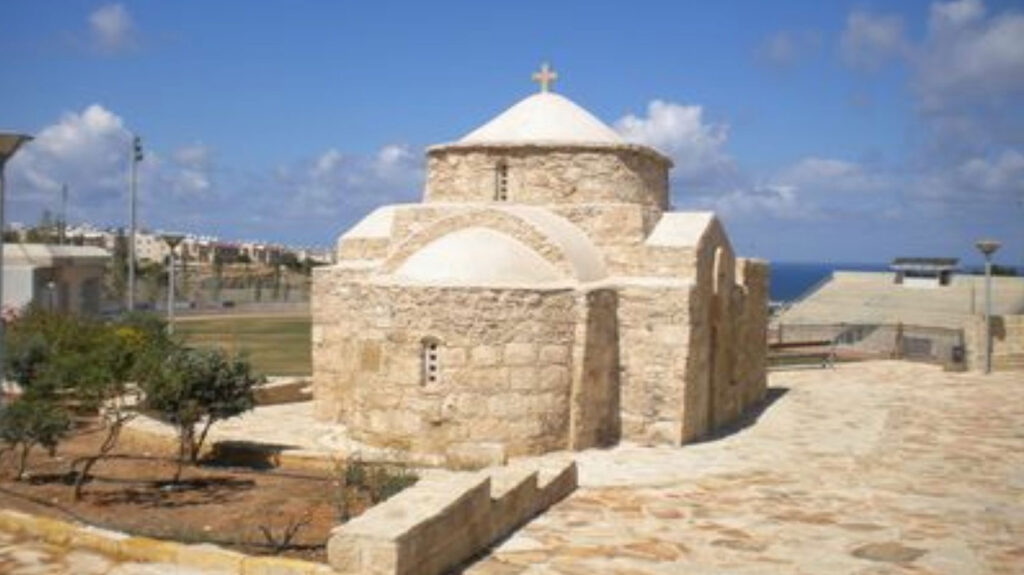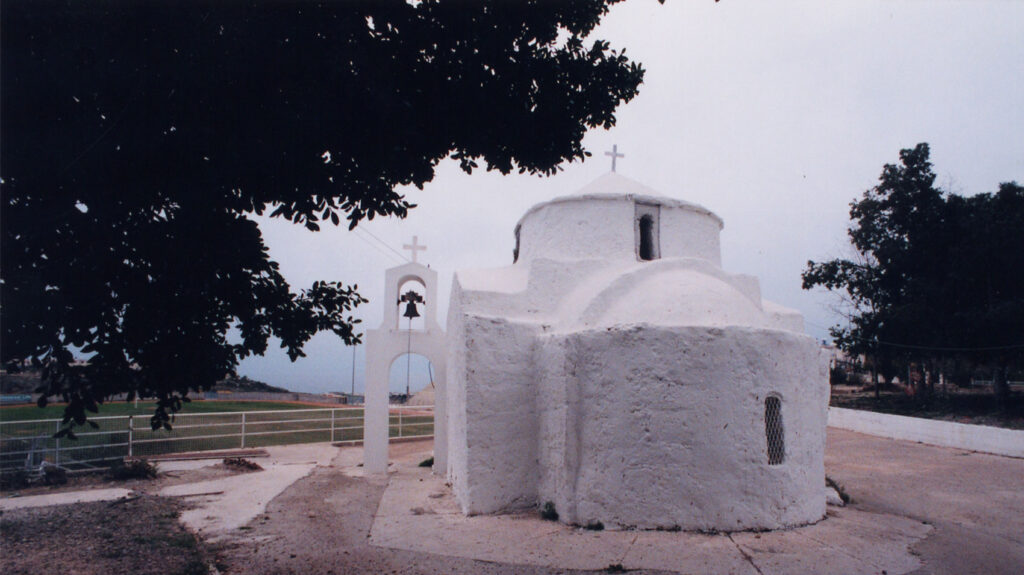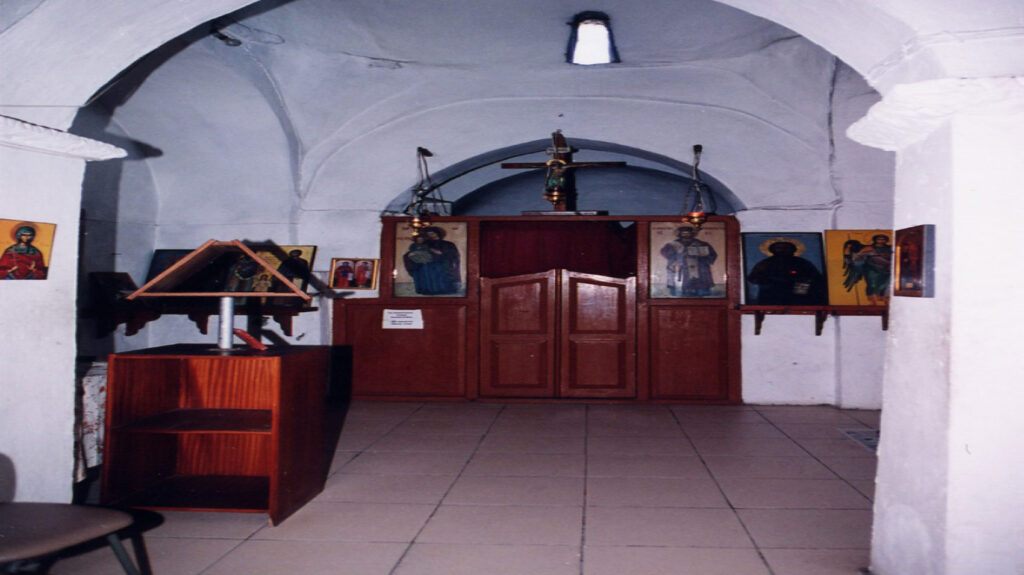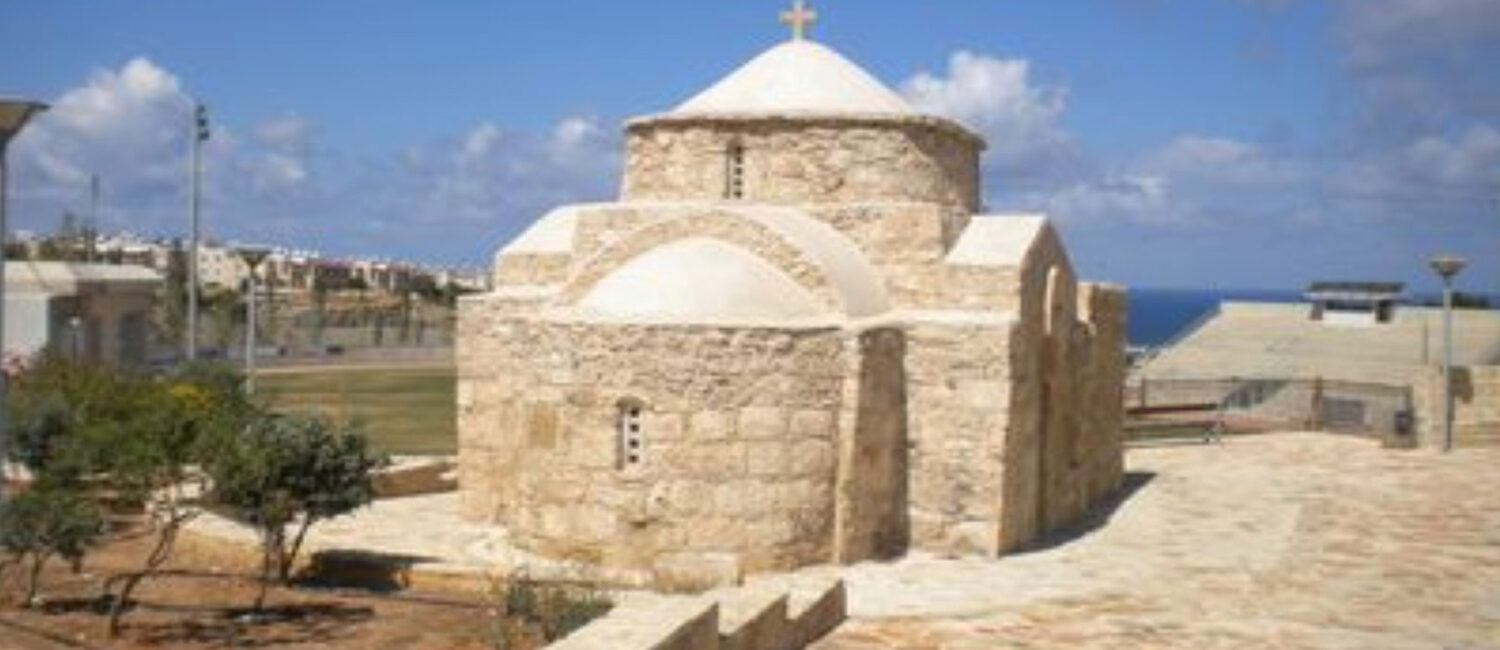Architecture and Heritage of the Church:
A small monastic church, built at the southern edge of the village. It is of the single-aisled type with a dome. This style prevailed during the period of Frankish rule. It was probably built in the 16th century. However, some scholars argue that it was built in the 12th century, as a coat of arms of a Frankish family, which is found at the entrance of the church, is the same as that found at the western entrance of the medieval church of the 12th century dedicated to the Virgin Mary of Eleousa.
Much later, a narthex was added to the small church. It is said that there were cells around it where monks lived, who cultivated the fields surrounding the church, making the area lush and green. The chapel functioned as a monastery until the first half of the 19th century. By 1805, the property of the monastery included fifteen “skales” (a local unit of measure) of orchards around the church with two fountains and trees, as well as five hundred “skales” of fields in the land of Petridion towards Empa.
Tradition:
According to tradition, this church was built by a captain who, while passing by the shores of Chloraka with his ship, encountered a fierce storm. He then made a vow to Saint Nicholas that if the storm calmed, he would build a church on the hill that he saw across from him, which he indeed did.
The Interior of the Church:
On the north wall of the church, there were traces of frescoes of Saint Nicholas and his life. The iconostasis of the church is simple. On the altar there are four portable icons. On the eastern wall, there is an imposing image of Saint Nicholas depicted as a hierarch. His face is ascetic, noble, and harmoniously proportioned. He is almost bald, with a large and wrinkled forehead, and his eyes are large and expressive. His beard and mustache are rounded.
To the right of the main church, there is a hollow where there were offerings, mainly shoes and wax feet. Here, the icon of Saint Xenophon of Xorin is hung. The faithful would take soil from this spot, as they considered it blessed by Saint Xenophon, who wards off evils.
The Holy Water:
Until recently, near the church, there was a spring from which holy water flowed into a small pond. From this pond, the children of the elementary school would fetch water to water the school garden. Around the church, there were many oaks, which the church later sold to Turkish Cypriots who had baths in the area.









